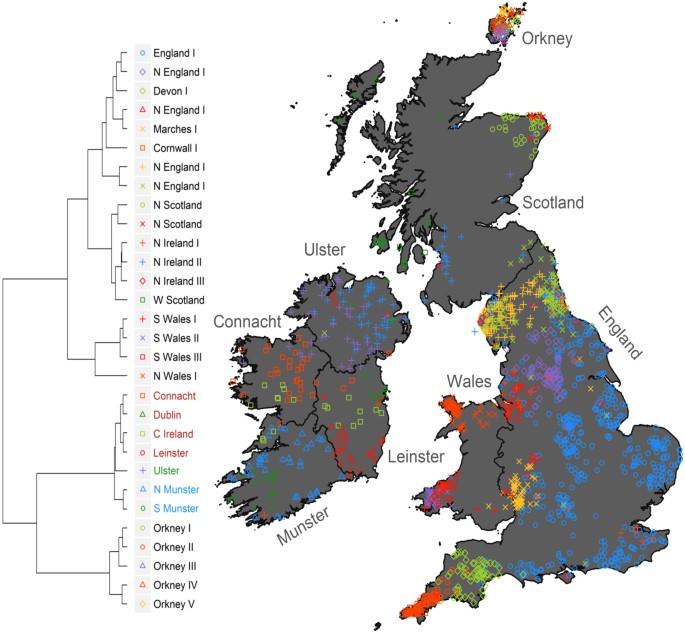The first, heralded by news release from the Royal College of Surgeons in Ireland, marks the publication of The Irish DNA Atlas: Revealing Fine-Scale Population Structure and History within Ireland. This is the peer reviewed article of material previously presented by lead author Edmund Gilbert in genetic genealogy sessions at Back to Our Past (Dublin) and Who Do you Think You Are? Live (Birmingham).
Based on data collected from 194 Irish individuals with four generations of ancestry linked to specific regions in Ireland, and complementary data from the UK and continental Europe,
"We show that the Irish population can be divided in 10 distinct geographically stratified genetic clusters; seven of ‘Gaelic’ Irish ancestry (surprisingly faithful to the historical boundaries of Irish Provinces and kingdoms), and three of shared Irish-British ancestry. In addition we observe a major genetic barrier to the north of Ireland in Ulster. Using a reference of 6,760 European individuals and two ancient Irish genomes, we demonstrate high levels of North-West French-like and West Norwegian-like ancestry within Ireland. We show that that our ‘Gaelic’ Irish clusters present homogenous levels of ancient Irish ancestries. We additionally detect admixture events that provide evidence of Norse-Viking gene flow into Ireland, and reflect the Ulster Plantations."The second article comes as a yet unreviewed preprint Insular Celtic population structure and genomic footprints of migration. 991 Irish individuals DNA was available from a health database, they were not selected to limit geographic origins which was available for 544 of the samples in the form of donor home address. 23 discrete genetic clusters were found which segregate with geographical provenance.
The studies differ in where they place Orkney results, the first with the Irish group, the second with the British. Also the second study shows South Munster separating much sooner from the Irish group than the first study.
These results provide more geographic granularity in Ireland than presently available from the commercial DNA test companies. LivingDNA has an Ireland group and one bridging Ulster and Scotland. Their own Ireland project is ongoing. AncestryDNA recognize three broad clusters, Ulster, Connacht, and Munster sub-divided into 16 genetic communities the definition of which depends on more than DNA. FamilyTreeDNA has a single group for the UK and Ireland. MyHeritage has a single Irish, Scottish, and Welsh group.


No comments:
Post a Comment